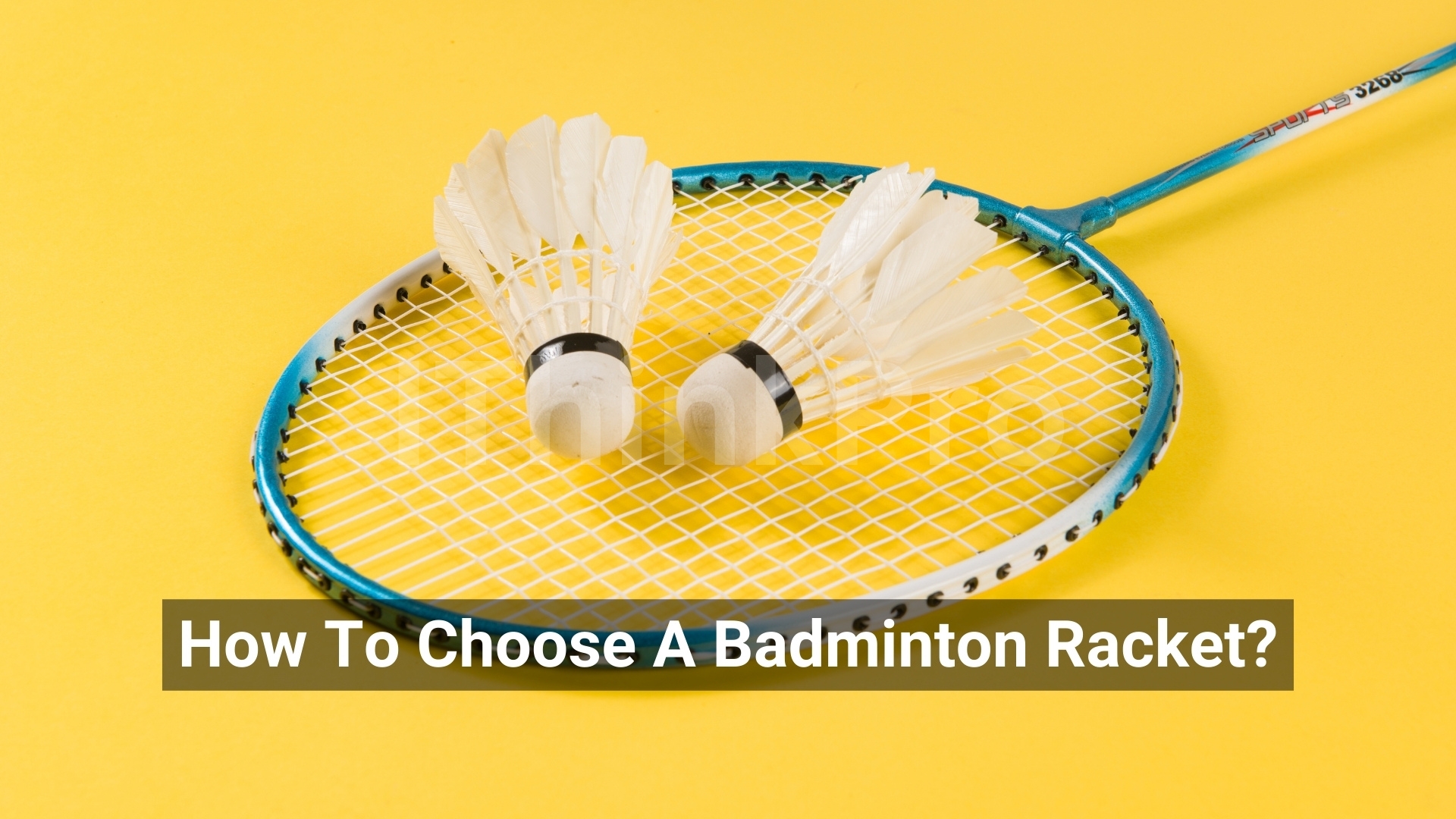Introduction
Hello Champ!
Choosing the right badminton racket can be difficult for both beginners and experienced players. With so many options available, it’s easy to get overwhelmed by the specs and features of different racquets.
Fortunately, understanding important factors like weight, balance, and string tension can make the process easier. By focusing on these aspects, you can find a racket that complements your playing style and enhances your performance on the court.
In this article, we will guide you how to choose a badminton racket, providing insights to help you make an informed decision. Whether you’re a beginner or a seasoned player, this guide will help you find the perfect racket to elevate your game.
Understanding Racket Components
Frame
The frame of a badminton racket consists of the head, neck and shaft. It is very important to provide overall structure and support to the racket.
Shaft
The shaft connects the handle to the frame and contributes significantly to the racket’s flexibility and power.
Grip
The grip is where you hold the racket. Choosing the right grip size is important for comfort and control.
Strings
The strings are very important to the effect of the shuttlecock and your playing style. The tension and type of strings affect the accuracy and power of your shot.
Types of Badminton Rackets
Power Rackets
Power rackets are designed for players who prefer aggressive play and strong smashes. They are usually head heavy and provide more speed.
Control Rackets
Control rackets are suitable for players who emphasize accuracy and precision. They are generally lighter and offer better maneuverability.
All-Round Rackets
All-round rackets are versatile, catering to players who need a balance of power and control. They are suitable for different playing styles and skill levels.
Factors to Consider When Choosing a Badminton Racket
Playing Style
Your playing style significantly affects your racket choice. Identify whether you’re an all-around player to find a racket that matches your style, power, or control.
Racket Weight
Rackets range from lightweight to heavy. Light rackets (70-85g) are easier to maneuver and are preferred by players with control, while heavier rackets (85-100g) provide more power.
Balance Point
A racket’s balance point determines its weight distribution. Head-heavy racquets increase power, head-light racquets improve control, and offer a mix of both equally balanced racquets.
Flexibility of Shaft
Shaft flexibility affects your power and control. Flexible shafts are forgiving and provide more power, while stiffer shafts offer better control and accuracy.
Grip Size
Choosing the right grip size is crucial for comfort and control. Larger grips provide more power, while smaller grips offer better control and maneuverability.
Materials and Construction
Aluminum vs. Graphite Rackets
Aluminum rackets are more affordable and durable, making them ideal for beginners. Graphite rackets are lighter and provide better performance, which is preferred by modern players.
Benefits of Composite Materials
Composite materials like carbon fiber and titanium add strength, durability and performance to the racket without adding extra weight.
Frame and Shaft Construction
Frame and shaft construction affect racket performance. High-quality construction materials improve the stability and responsiveness of the racket.
String Tension and Type
Optimal String Tension
String tension affects the performance of your racket. Low tension provides more power and a larger sweet spot, while higher tension offers better control and accuracy.
Types of Strings
Wires come in different materials and thicknesses. Choose strings based on your playing style and the type of feel and response you prefer.
Brand Recommendations On How To Choose A Badminton Racket?
Yonex
Yonex is a leading badminton racket brand known for its innovative designs and high-quality materials. It’s a top choice for many professional players.
Li-Ning
Li-Ning offers a wide range of rackets catering to different playing styles and skill levels. Their rackets are known for their durability and performance.
Victor
Victor is another reputable brand that provides high-performance badminton rackets. Their products are popular among both amateur and professional players.
Other Notable Brands
Other notable brands include Carlton, Babolat, and Wilson, each offering unique features and benefits catering to various players’ needs.
Budget Considerations
High-End Rackets
High-end rackets, priced above $150, feature advanced technology and materials. They are ideal for serious athletes seeking high performance.
Mid-Range Rackets
Mid-range rackets, priced between $50 and $150, offer a balance of quality and affordability, suitable for intermediate players.
Budget Rackets
Budget rackets, priced under $50, are perfect for beginners or casual players. They offer decent performance without high investment.
Conclusion
Choosing the right badminton racket can significantly affect your performance on the court. This blog post covers essential factors such as racket components, types, materials, string tension, and brand recommendations. Understanding your playing style, considering racket weight, balance, and shaft flexibility, and choosing the proper grip size are important steps in finding the perfect racket. Whether you prefer power, control, or an all-around approach, there’s a racket designed to meet your needs. Additionally, knowing your budget helps narrow down your options, from high-end to budget-friendly options.
Explore our website for in-depth guidance and tips on badminton or other sports-related topics.
FAQs
Q1. What is the ideal weight for a badminton racket?
The ideal weight depends on your playing style. Lighter rackets (4U: 80-84g) offer better maneuverability, while heavier rackets (3U: 85-89g) provide more power.
Q2. How do I determine the right grip size for my racket?
Grip size is a personal preference. Smaller grips (G4, G5) allow for more wrist action and control, while larger grips (G2, G3) offer more power.
Q3. What is the difference between power and control rackets?
Power rackets are designed for aggressive, attacking play with a head-heavy balance. Control rackets are balanced or head-light, providing precision and maneuverability.
Q4. Why is string tension important in a badminton racket?
String tension affects your control and power. Higher tension (24-30 lbs) offers better control but less power, while lower tension (18-23 lbs) provides more power but less control.
Q5. Are expensive rackets always better than budget options?
Not necessarily. Expensive rackets offer advanced features and materials, but budget rackets can still perform well, especially for beginners and recreational players.











